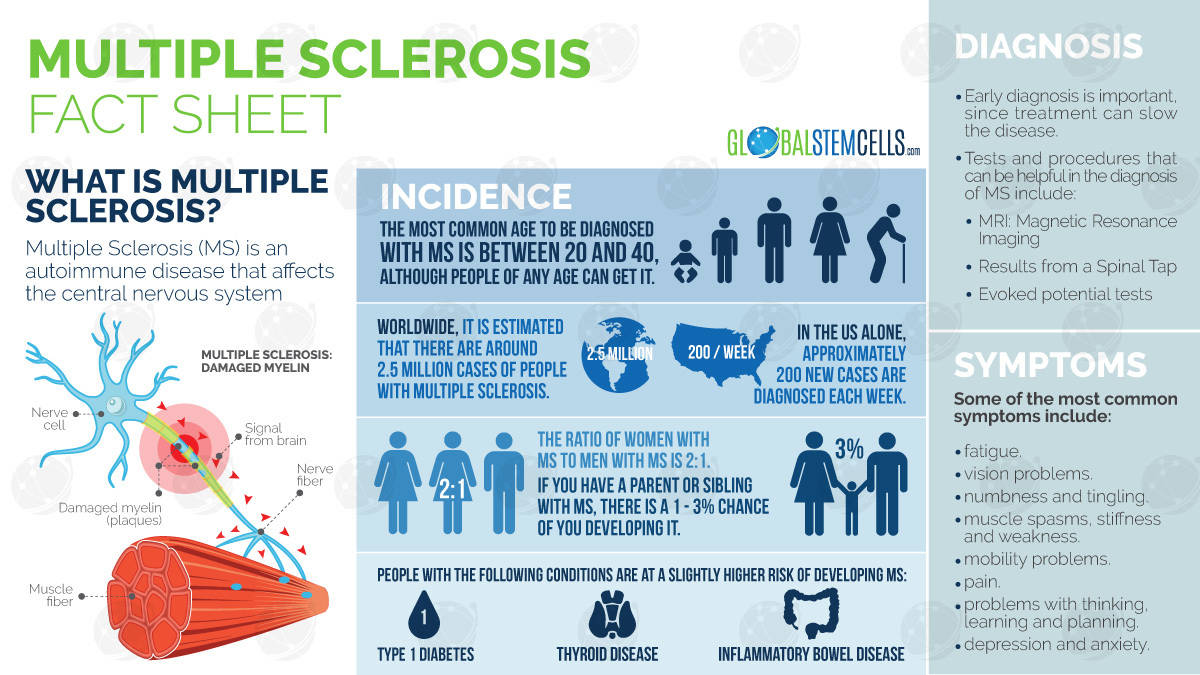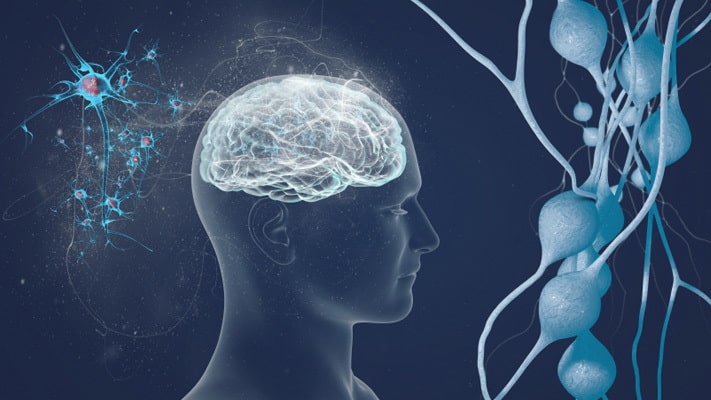Multiple Sclerosis is a chronic autoimmune disease that involves damage to the sheaths of nerve cells in the brain and spinal cord, affecting the central nervous system.
An autoimmune disease is a disease in which the body produces antibodies that attack its own cells and tissues.
It is unclear what triggers this attack although genetic susceptibility is thought to be a crucial determinant, as are environmental factors.
Multiple Sclerosis Symptoms
The disease is usually progressive and can affect any part of the body. No two persons have quite the ‘same’ disease. Each person is affected differently. Some people experience a progressive deterioration while others may enjoy spells where they are completely free of Multiple Sclerosis symptoms. These relapses (states of worsening symptoms) and remission (where symptoms lighten or disappear completely) make the disease a completely unique experience to each one suffering from it.
People between the ages of 20 and 40 appear to be more susceptible to the disease. This is not a hard-and-fast rule, however, and people outside this age bracket have been known to come down with this ailment. Women too display a higher vulnerability when it comes to Multiple Sclerosis and are twice as likely to be diagnosed with it compared to men. A Multiple Sclerosis Symptoms Checklist must therefore be read with the foregoing in mind.
Multiple Sclerosis Statistics
Global figures for Multiple Sclerosis patients hover around the 2.5 million mark. Heredity appears to play a small but significant role in determining the genetic predisposition of getting this disease. If a parent or sibling has Multiple Sclerosis your chances of acquiring it are in the 1 – 3% range.

A state of disease means that your body is doing battle to try and eliminate the interloper. This considerably weakens the immune system. This is why unaccounted-for fatigue is always the first noticeable sign that some malady has crept into the body. And so it is with Multiple Sclerosis. Fatigue: cue for immediate screening.
- Ocular problems, be they blurring or greying of vision, or even blindness in one eye, maybe the result of inflammation of the optic nerve. This is a classic sign that ranks quite high on the Multiple Sclerosis Symptoms Checklist.
- Muscular coordination, with its attendant mobility problems, is perhaps the best known symptom of Multiple Sclerosis. This will invariably come side by side with speech impairment, although each symptom may show up singly and sequentially. Muscle spasms and stiffness may also indicate the presence of this disease.
- Hitherto, unencountered problems with the thinking process, which may involve learning, planning and other processes, could be indications of the presence of Multiple Sclerosis. This obstruction in the thought process inevitably leads to depression and anxiety.
Emphasis is, as always, on catching the disease early. A fairly positive prognosis is possible when Multiple Sclerosis is diagnosed early and treatment has been shown to slow down the disease.
If you have any of the signs described in the Multiple Sclerosis Symptoms Checklist, as detailed above, and are considering stem cell therapy do get in touch with us. We also offer a range of supportive treatments and therapies which include Hyperbaric Oxygen Chamber (HBOT), Occupational Therapy, Acupuncture, Hemo Oxygen Therapy (HOT) and immune-boosting supplements among others. A Patient Representative will guide you through the various tests and procedures we offer to ensure an accurate and timely diagnosis. We will also walk you through the various treatments that are available to you.




 English
English